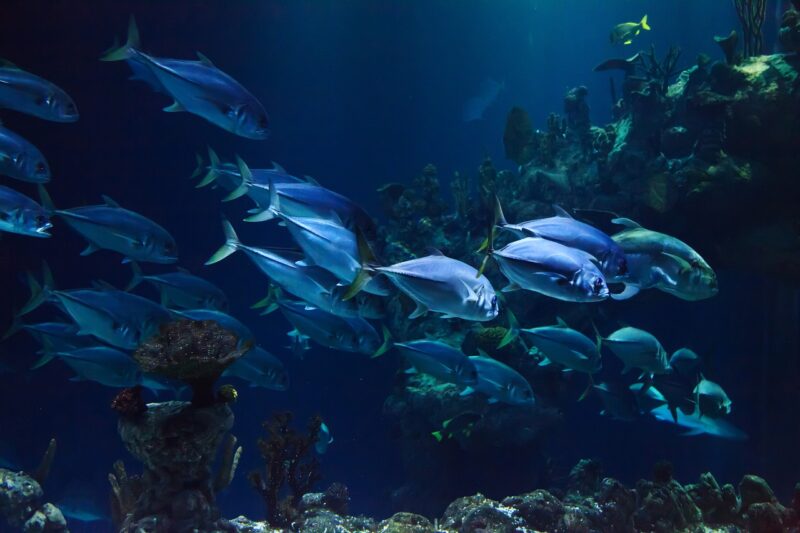How Deep-Sea Fishing Is Changing with New Technology and Gear
November 11, 2024

Deep-sea fishing has evolved significantly over the past few decades, driven by advancements in technology and gear that enhance the efficiency, safety, and sustainability of the practice. From sophisticated sonar systems to eco-friendly fishing gear, modern innovations are not only transforming how anglers catch fish but also how the oceans are managed and preserved for future generations.
1. The Evolution of Deep-Sea Fishing
Historically, deep-sea fishing involved small crews aboard relatively straightforward vessels, relying on basic tools and their instinct for finding fish. However, as demand for seafood has increased, the industry has had to adapt.
In the last 50 years, advancements such as mechanization and globalization have impacted deep-sea fishing in profound ways. Today, deep-sea fishing encompasses everything from commercial operations using large trawlers to sports fishing ventures targeting prized species.
2. Technological Innovations in Deep-Sea Fishing
Deep-sea fishing has benefited from various technological innovations that range from navigation systems to sophisticated fishing gear. Key advancements include:
- Sonar Technology: Fish finders and sonar technologies allow fishermen to locate schools of fish with pinpoint accuracy. These devices use sound waves to detect fish underwater, enabling more efficient fishing practices.
- GPS Systems: Global Positioning Systems facilitate precise navigation across expansive oceanic spaces. Fishermen can now return to successful fishing spots with ease, minimizing time spent searching for fish.
- Automated Gear Systems: New gear technologies like automatic line retrieval systems and smart reels reduce the physical strain on fishermen while increasing catch efficiency.
- Drones and Underwater Cameras: Drones equipped with cameras can scout areas for fish, while remote-operated vehicles (ROVs) provide real-time underwater footage, helping fishermen assess fish populations and habitats without intrusive methods.
These technological advancements are streamlining practices while enhancing safety for fishermen venturing into deeper waters.
3. Eco-Friendly Innovations: The Push for Sustainability
As deep-sea fishing has ramped up, so too have concerns about overfishing, bycatch, and habitat destruction. In response, the fishing industry is increasingly focusing on sustainability through technological innovations:
- Eco-Friendly Gear: Modern nets and traps are designed to reduce bycatch, allowing non-target species to escape unharmed. Innovations like circle hooks and biodegradable materials are examples of sustainable practices gaining traction.
- Monitoring and Data Collection: Advanced technologies, including satellite tracking and IoT devices, facilitate real-time monitoring of fish stocks and movement, providing valuable data for sustainable management practices.
- Fishery Management Software: Software solutions enable fishermen to track their catches and adhere to regulations, ensuring compliance with quotas and promoting responsible fishing practices.
Sustainability is not just a trend; it’s an essential component for the future of deep-sea fishing, ensuring that the oceans can continue to provide resources for generations to come.
4. The Role of Artificial Intelligence in Fishing
Artificial intelligence (AI) is making significant contributions to deep-sea fishing in several ways:
- Data Analysis: AI algorithms can analyze vast quantities of data from previous fishing trips to identify patterns and predict future fish movements, enabling more strategic fishing efforts.
- Automated Decision Making: AI can help optimize routes based on weather, time of day, and historical data, enhancing the chances of a successful catch.
- Improved Catch Reporting: AI technology can streamline catch reporting processes, making it easier to monitor compliance with regulations and quotas.
AI is proving to be a game-changer in enhancing the efficiency of deep-sea fishing operations while also promoting responsible practices.
5. Future Trends in Deep-Sea Fishing Technology
Looking ahead, the deep-sea fishing industry will likely see further innovations:
- Autonomous Vessels: The advent of drones and autonomous fishing vessels promise a future where fishing operations can be conducted with minimal crew, increasing efficiency and safety.
- Advanced Biometric Monitoring: Technologies enabling real-time monitoring of fish health and populations will help in managing ecosystems better and adapting practices according to dynamic environmental conditions.
- Blockchain for Traceability: Blockchain technology could enhance transparency in fish supply chains, allowing consumers to trace the origin of their seafood easily and ensuring responsible sourcing.
These emerging trends indicate a shift towards more intuitive, responsible, and tech-driven fishing practices that consider both profitability and sustainability.
Conclusion: Navigating the Future of Deep-Sea Fishing
In conclusion, deep-sea fishing is undergoing significant transformation driven by technological advancements and an increasing focus on sustainability. From innovative gear that reduces bycatch to AI-driven analytics that enhance fishing strategies, the industry is evolving to meet the modern challenges of overfishing and environmental stewardship.
As we enter a new era of deep-sea fishing, it is crucial for anglers, consumers, and regulators to work together to harness these advancements responsibly. By embracing technology while prioritizing sustainable practices, we can ensure that deep-sea fishing remains a vital source of both food and recreation for future generations.








